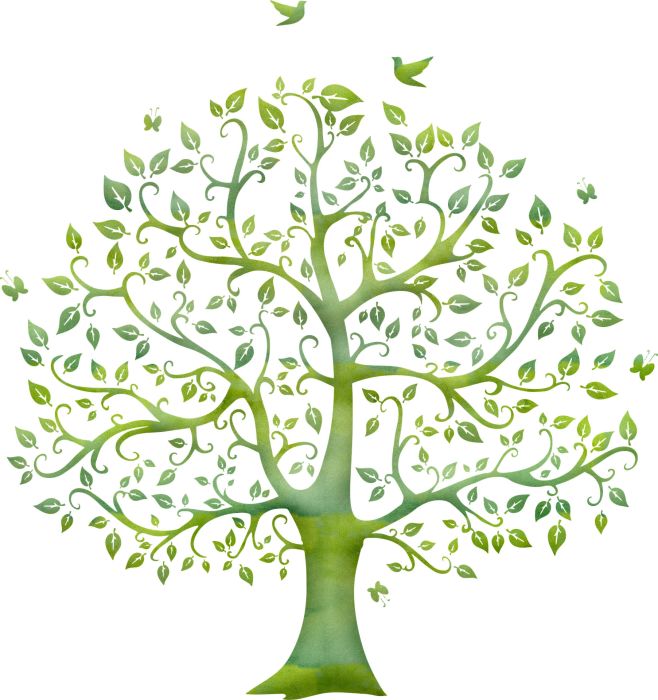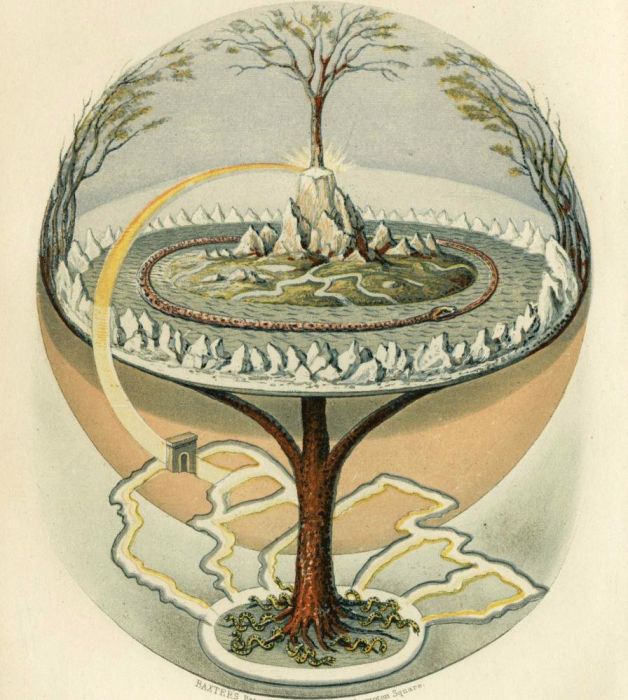
My research with forester and naturalist Antonio De Bona on the fascinating and mysterious world of trees continues. Today we want to take you on a journey to discover the many symbologies that have for centuries placed the tree at the centre of the most ancient cultures and religions, through history, literature and mythology, but not only…
Trees have always had sacred and symbolic meanings: human beings, observing their growth and death, the elasticity of their branches, the annual decay and regrowth of their foliage, have considered and worshipped them as symbols of growth, decay and resurrection.
The earliest symbolic representation of the construction of the universe is the concept of the ‘World Tree‘ or ‘Cosmic Tree‘, which acts as the axis of the universe (Axis Mundi) and thus the link between Heaven and Earth, through branches and roots. According to Hungarian mythology, the world is divided into three spheres (Upper World, Middle World and Underworld) connected by a tall tree, called Világfa, the ‘World Tree’, which in some stories also bears fruit, namely golden apples.
In Scandinavian mythology, however, the cosmic tree is Yggdrasill, an ash tree whose mighty branches support the nine worlds (which make up the entire universe) and is the source of life, knowledge and destiny. The world tree is also present in Slavic and Finnish mythology in the form of an oak, in Siberia in the form of a birch and larch, in Islam as an olive tree and in Hinduism as Ashvastha or sacred fig (Ficus religiosa).

The analogy with the tree of life is similar: its structure, firmly bound to the earth by its abundant roots, but reaching towards the sky with its luxuriant branches, is a symbol of life, the world and knowledge for many peoples. With its strong, gnarled trunk, it is often enclosed in a circle, mainly due to the shape of its crown and root system, which almost touch each other.
Although there are many interpretations, the tree of life represents, in a sense, all the stages of existence: the roots are what anchor us to the past and give us solidity, allowing us to grow and prosper, and therefore represent family, affections and values; the trunk, robust and resistant, represents the path of elevation from the earth to the sky, but also the strength that must be put into facing the many challenges and pitfalls of life; the many leaves of the foliage, on the other hand, are the future, green and full of hope, and the ripe fruits, rare and precious, could represent new lives coming into the world, but also the opportunities that arise in our lives and that we must not let slip away. Thus, the tree of life holds many symbolic meanings, ranging from rebirth to peace, prosperity to family, and strength to faith.
In biblical tradition, the Tree of Life appears in Genesis alongside the Tree of the Knowledge of Good and Evil. In fact, for some authors, these two trees are said to be a single symbolic tree that refers to God himself as the source of life (the Tree of Life) and to his ultimate meaning (the Tree of the Knowledge of Good and Evil).
Plato, in his Timaeus, describes man as a plant, not terrestrial but ‘celestial’, an upturned tree whose roots reach towards the heavens and whose branches reach towards the earth: ‘[…] holding up our head and root right there, from where the soul drew its first origin, the divine element keeps our whole body upright‘.
Even Dante, in Purgatory (canto XXII), speaks of an overturned tree, with fruits of a sweet and pleasant perfume, which gradually became sparser and sparser towards the bottom, perhaps to prevent someone from climbing it. From the way Dante speaks, in fact, one deduces that the tree may be the reflected and inverted image of the Tree of Life, on which the souls in Purgatory cannot eat and on which they cannot climb.
The tree, according to the founder of analytical psychology Carl Gustav Jung, is one of the symbolic archetypes of the collective unconscious, present in all cultures. Jung noticed that the image of the tree appeared to his patients in moments of crisis, as a support in the process of integration and growth. Although they were unaware of the symbolic meaning behind the figure of the tree, they dreamt or painted tree motifs spontaneously and benefited from them. The image of the tree, therefore, has an evocative and therapeutic power of deep resonance in our psyche and becomes a symbol of the person, his or her history and evolution.
Trees are also depicted on many flags, coins, banknotes and heraldic coats of arms, elected as symbols of the different states of the world. The green cedar (Cedrus libani) in the centre of the flag of Lebanon, symbolising immortality and steadfastness, or the mahogany tree (Swietenia humilis) on the coat of arms of Belize, symbolising the importance of the mahogany trade in the country in the 18th and 19th centuries.

Or the stylised red leaf of the sugar maple tree (Acer saccharum) on the flag of Canada, famous for its maple forests throughout the country and the syrup made from these plants. A reference to the emblem of the Italian Republic is a must at this point: the cogwheel, representing work, and the Star of Italy are enclosed by an oak branch (on the right) symbolising the strength and dignity of the Italian people, and an olive branch (on the left) symbolising the nation’s desire for peace, understood both as internal harmony and international brotherhood. An oak branch is also depicted on the German 1, 2 and 5 cent coins, while the French 1 and 2 euro coins depict the tree of life, enclosed in a hexagon symbolising the nation’s borders.
Trees have fascinated mankind for thousands of years: their longevity, strength and majesty have made them, and still make them, sacred to many peoples. Their symbolic value is manifold all over the world, linking beliefs, traditions and cultures that are extremely diverse and, apparently, very distant. This must make us bear in mind that our existence has always been closely and indissolubly linked to that of trees and that a return to nature is more necessary than ever to rediscover that magical and archaic connection with these beings, as mysterious as they are essential to our survival on Planet Earth.
Since ancient times, the tree has been the symbol and expression of life, balance and wisdom. (Jean Giono)






































